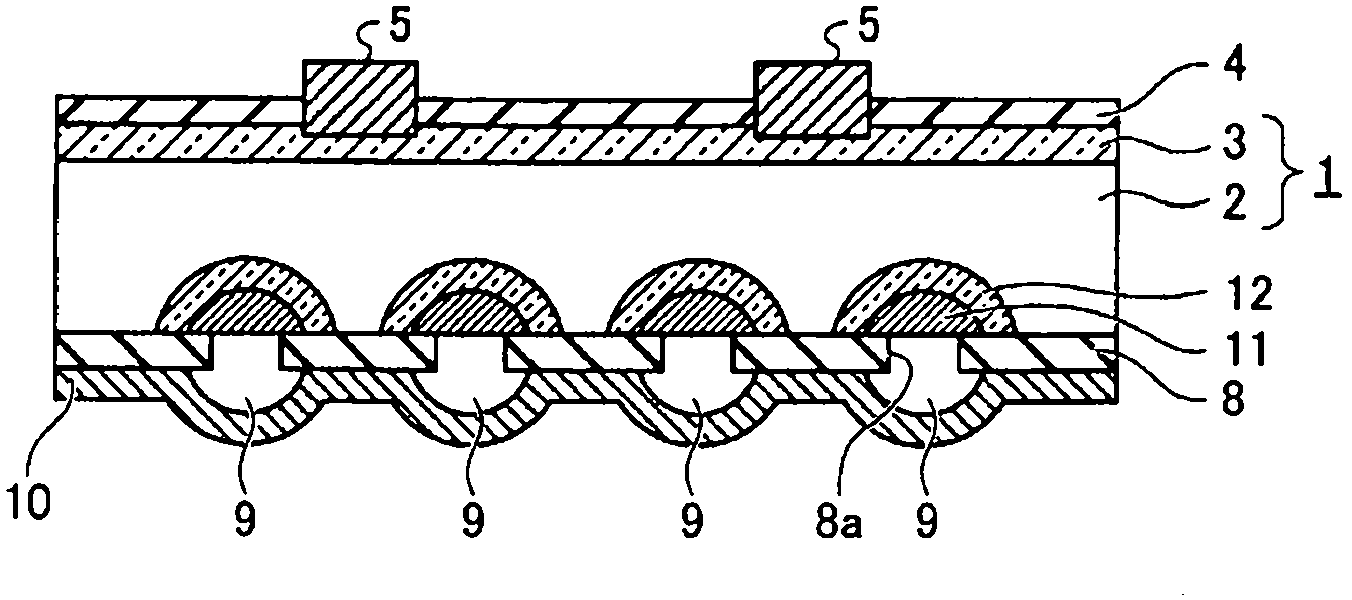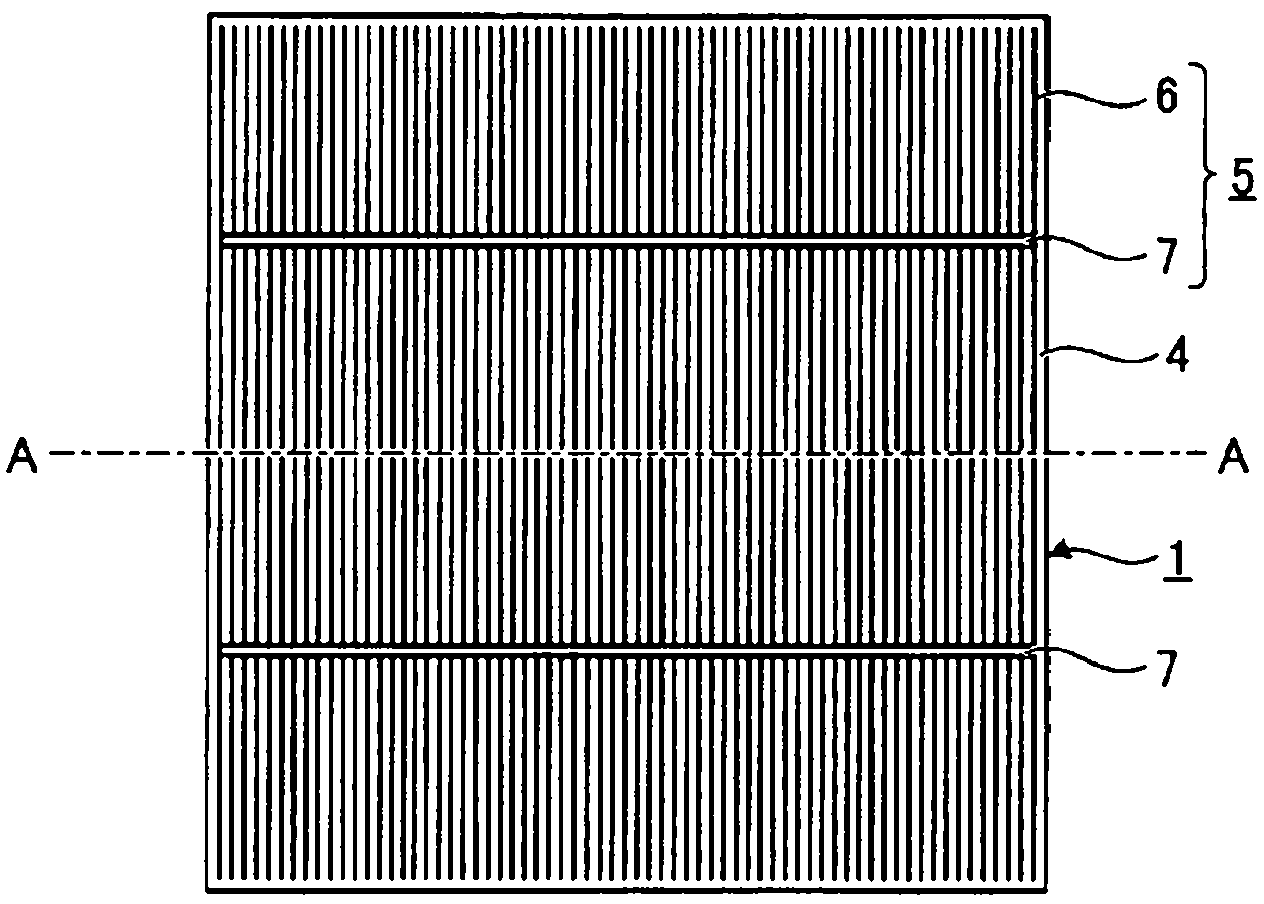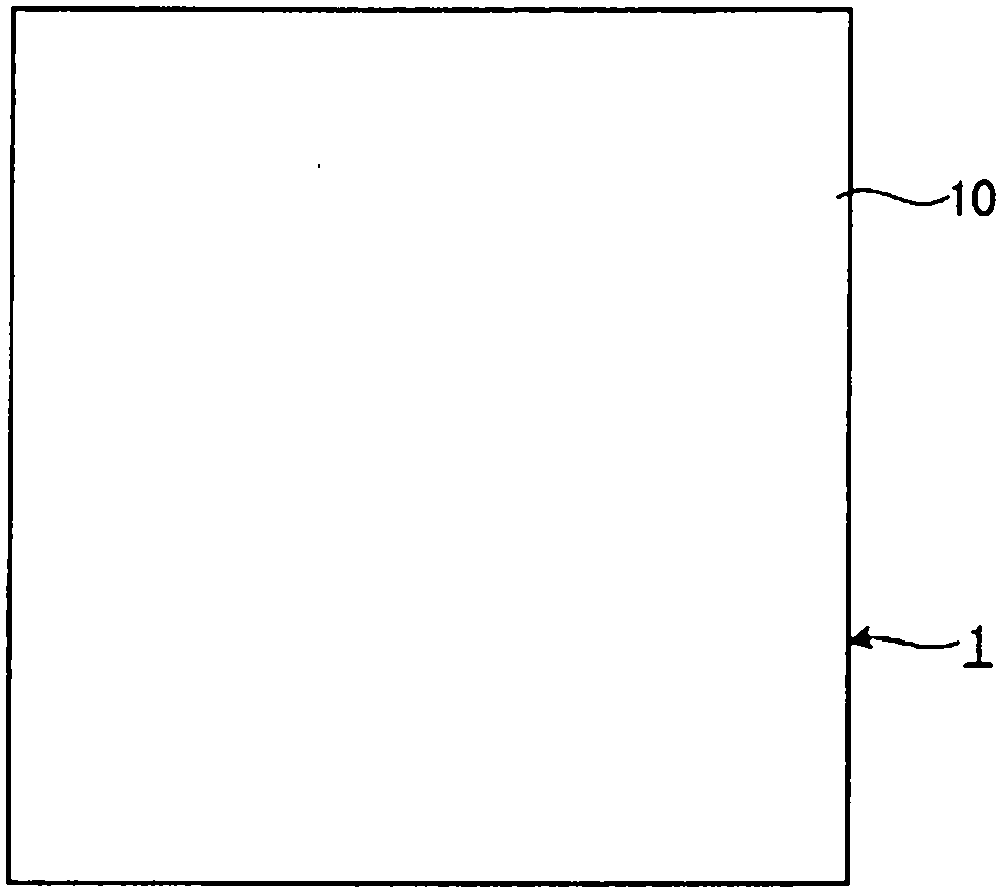Photovoltaic device and method for manufacturing same
A technology of photovoltaic device and manufacturing method, which is applied in the direction of photovoltaic power generation, semiconductor devices, electrical components, etc., can solve the problems of low recombination speed, achieve low recombination speed, high back reflectivity, and prevent the effect of open circuit voltage (Voc
- Summary
- Abstract
- Description
- Claims
- Application Information
AI Technical Summary
Problems solved by technology
Method used
Image
Examples
Embodiment approach 1
[0044] FIGS. 1-1 to 1-3 are diagrams showing the structure of a solar battery cell as a photovoltaic device according to this embodiment, and FIG. 1-1 is a sectional view of main parts for explaining the cross-sectional structure of a solar battery cell, and FIG. 1-2 It is a plan view of the solar battery cell viewed from the light-receiving surface side, and Fig. 1-3 is a bottom view of the solar battery cell viewed from the side opposite to the light-receiving surface (rear side). Fig. 1-1 is a sectional view of main parts taken along line A-A of Fig. 1-2.
[0045]The solar cell unit of this embodiment is shown in Figures 1-1 to 1-3, including: a semiconductor substrate 1, which has a pn junction (p-n junction), and is a solar cell substrate with a photoelectric conversion function; an anti-reflection film 4. It is formed on the light-receiving surface side (front surface) of the semiconductor substrate 1, and is an insulating film that prevents reflection of incident light ...
Embodiment approach 2
[0103] In Embodiment 2, as another form of the back reflection film 10 , a case where the back reflection film 10 is made of a metal foil will be described. Figure 7 It is a sectional view of main parts for explaining the sectional structure of the solar battery cell of this embodiment, and is a figure corresponding to FIG. 1-1. The difference between the solar battery cell of Embodiment 2 and the solar battery cell of Embodiment 1 is that the back reflective film is not a silver sputtered film but is made of aluminum foil. The configuration other than this is the same as that of the solar battery cell according to Embodiment 1, so detailed description thereof will be omitted.
[0104] like Figure 7 As shown, in the solar battery cell of this embodiment, on the back surface of the semiconductor substrate 1, the conductive adhesive 21 arranged on the back aluminum electrode 9 covers the back aluminum electrode 9 and the back insulating film 8. A rear reflective film 22 made...
Embodiment approach 3
[0117] In Embodiment 3, an embodiment in which degradation of characteristics due to burn-through is prevented in the solar cells of Embodiments 1 and 2 described above will be described.
[0118] In terms of increasing the efficiency of crystalline silicon solar cells, the suppression of the recombination rate on the rear surface has recently become more and more important. Instances where the diffusion length of the carrier is greater than the thickness of the silicon substrate are by no means uncommon in both monocrystalline silicon solar cells and polycrystalline silicon solar cells. Therefore, the magnitude of the surface recombination velocity on the back surface of the silicon substrate greatly affects the characteristics of the solar cell.
[0119] On the other hand, when processing from a solar battery cell as a device unit to a solar battery module as an actual product, a plurality of solar battery cells are connected in series or in series or in parallel via metal f...
PUM
 Login to View More
Login to View More Abstract
Description
Claims
Application Information
 Login to View More
Login to View More - R&D
- Intellectual Property
- Life Sciences
- Materials
- Tech Scout
- Unparalleled Data Quality
- Higher Quality Content
- 60% Fewer Hallucinations
Browse by: Latest US Patents, China's latest patents, Technical Efficacy Thesaurus, Application Domain, Technology Topic, Popular Technical Reports.
© 2025 PatSnap. All rights reserved.Legal|Privacy policy|Modern Slavery Act Transparency Statement|Sitemap|About US| Contact US: help@patsnap.com



